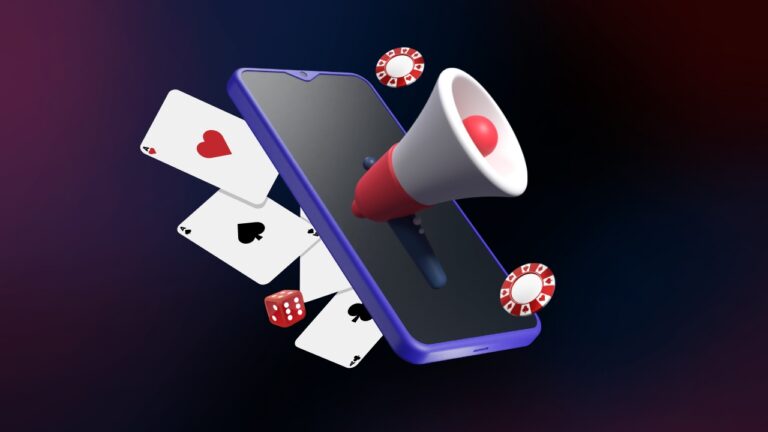In most companies, marketing and design operate like next-door neighbors who wave politely but barely talk. Both are critical to product success, yet their work often happens in parallel lanes.
Marketing is out there crafting campaigns, eyeing KPIs, and pushing growth. Design is inside the product, shaping the experience – making it usable, beautiful, and, ideally, loved.
But when those lanes merge around shared user goals, something shifts. The work gets smarter. Communication gets easier. And the end product? It starts to feel more intentional. Less like a compromise. More like something people actually want to use.
Let’s break down why sharing user goals matters so much, what happens when it doesn’t, and how to build a better rhythm between the teams that shape how a product is seen and how it feels.
Shared Goals Prevent Silos from Wrecking the Experience

When teams don’t coordinate, the cracks show up fast. A flashy campaign might promise simplicity while the actual product experience feels clunky. Or a beautifully designed app launches with zero marketing traction because no one outside the design sprint ever saw it.
That disconnect usually starts with siloed thinking.
Design teams often focus on user flows, accessibility, and visual hierarchy. Marketing teams zero in on brand consistency, conversions, and positioning.
On paper, it makes sense. But real users don’t experience products in silos. They see one brand. One promise. One outcome. So when messaging and UX are misaligned, users notice – and trust slips.
The fix isn’t more meetings for the sake of meetings. It’s sharing goals that actually matter to users.
Monthly check-ins can go a long way. Teams get a chance to share what they’re seeing: user feedback from support tickets, testing data, campaign results, early adoption curves. One team’s insights often fuel smarter decisions for the other.
For example, marketers might surface a pattern – users are dropping off after the second onboarding email. Design can use that cue to revisit the in-product guidance.
Or maybe the UX team hears during testing that users are struggling to find a new feature. Marketing can use that intel to tweak messaging and clarify benefits before launch.
When research flows freely between teams, the end result becomes more cohesive. Everyone’s pulling toward the same target.
Aligning Business Goals Without Losing the User

Marketing is there to move numbers – leads, signups, revenue. Design is there to make the product usable, engaging, and trustworthy. Both are trying to create value, just with slightly different dashboards.
Shared user goals give both teams a compass. Without that, design might chase perfect UX while ignoring the business need for growth. Marketing might optimize ads that convert but ignore user churn after week one.
A simple way to ground both teams: build a shared persona.
This doesn’t replace the more specialized personas each team might use. It adds a third one – the current user who is also a potential customer. Not a hypothetical. Someone real. Someone both teams can reference.
Let’s say you’re building a budgeting app. Marketing might build for “millennial freelancer looking to cut costs.” Design might focus on “new users who feel intimidated by financial jargon.” A shared persona could be “A 32-year-old gig worker with ADHD, who gets anxious looking at spreadsheets but wants to stop living paycheck to paycheck.”
Now both teams are building for someone specific. Not just a type. A person with motivations, frustrations, and goals. That kind of shared clarity leads to smarter decisions – and avoids tension when business needs seem to rub up against UX concerns.
User Goals Should Shape the Design Process from the Start

Design isn’t just about how things look. It’s about how people feel when using a product – and whether they’re actually able to accomplish what they came to do.
User goals aren’t a footnote in that process. They shape every step.
According to the Interaction Design Foundation, five phases of information design benefit directly from clarity on user goals. Here’s how:
| Design Step | Impact of User Goals |
| Define the Problem | Makes sure you’re solving something users actually care about |
| Define the Data | Helps filter what’s relevant and what’s just noise |
| Define Dimensions | Focuses the experience on what matters most to the user |
| Define Structures | Guides how content is organized for clarity and action |
| Define Interaction | Ensures controls are intuitive, responsive, and aligned with user expectations |
Let’s ground that in an example. Imagine designing an air quality app for parents near a nuclear disaster zone. The raw data isn’t helpful on its own. The user’s real goal is knowing whether it’s safe for their child to play outside today.
So the interface needs to answer that question – fast, clearly, and without technical jargon. Color-coded alerts, local context, maybe even suggestions like “safe for outdoor play before 4 p.m.” That’s what alignment around user goals looks like. It keeps the design practical and emotionally tuned.
Strong UX Drives Stronger Marketing Results

When teams share user goals, the experience improves across the board – from the first impression to the hundredth use. That kind of consistency is what keeps users around.
Spotify’s “Discover Weekly” is a great case study. It’s the result of design and data teams working to solve one core user goal: “Help me find music I’ll like without trying.”
One example in a completely different industry is Soft2Bet iGaming, which aligns gamification design and marketing messaging so tightly that engagement becomes the messaging.
Marketing didn’t invent that feature. But once it existed, they amplified it – and the feature became a hook for user retention.
The point here is that user goals aren’t just helpful in UX; they’re rocket fuel for campaigns. Features that solve real problems are easier to promote. Messaging writes itself when the product speaks clearly to a need.
Better yet, a great UX shortens the sales funnel. Users who actually enjoy using your product are more likely to tell others about it. And when marketing surfaces insights from customer behavior, design can close loops and smooth out bumps that might otherwise stall growth.
Business Needs Still Matter, But They’re Not the Whole Picture
Let’s be real: businesses need to make money. That can mean tough calls – like introducing paid tiers or nudging users toward higher-value plans. Those moves can frustrate users if handled carelessly.
The solution isn’t to avoid those decisions. It’s to balance them with clear communication and UX choices that respect the user’s goals.
Take freemium models, for instance. When done well, they offer real value to free users without making them feel like second-class citizens. They create trust and leave the door open for paid upgrades based on genuine need.
Owolabi Gbemisola Oluwatoyin pointed out in a Medium article that focusing only on UX without thinking about monetization nearly sank her product. She learned to weigh business realities alongside user expectations – and to loop in marketing early so the value proposition felt honest and coherent.
There are cautionary tales, too. Google Glass was a bold concept with sleek design. But pricing and positioning missed the mark. Without support from marketing to frame the value – and without clear signals from users on what they actually wanted – the product never stuck.
That’s why shared user goals matter. They help teams evaluate ideas not just by how cool they are, but by how well they fit into people’s lives and wallets.
How to Actually Share User Goals Across Teams

Now for the practical stuff. Shared goals sound great, but how do you actually make it happen?
Here’s a simple framework that works in real teams – not just theory.
| Step | What to Do | Why It Helps |
| Joint User Research | Surveys, interviews, field studies | Builds empathy and uncovers common insights |
| Shared Personas & Journey Maps | Create visual artifacts of the user’s path and pain points | Keeps both teams grounded in real user behavior |
| Regular Collaboration Meetings | Monthly or bi-weekly sessions to compare notes and adjust priorities | Prevents silo thinking and missed opportunities |
| Aligned KPIs | Connect success metrics across teams – conversions, retention, NPS, etc. | Encourages accountability and shared wins |
These aren’t magic tricks. They’re habits. They work when teams show up curious and open – not defensive. When people are willing to listen, share, and adjust, the results get sharper over time.
Also, don’t underestimate the value of small overlaps. Having a marketer sit in on a design review, or a designer join a campaign brainstorm, builds casual awareness that eventually pays off in trust and timing.
Final Thoughts
Products win when they serve users well and hit business goals. Getting there means knocking down the invisible wall between design and marketing. Shared user goals give both teams a reason to work together, a language they can both speak, and a purpose they both believe in.
It’s not always smooth. Priorities will clash. Ideas will compete. But when teams are aiming at the same user-centered outcomes, those disagreements become productive instead of political.



